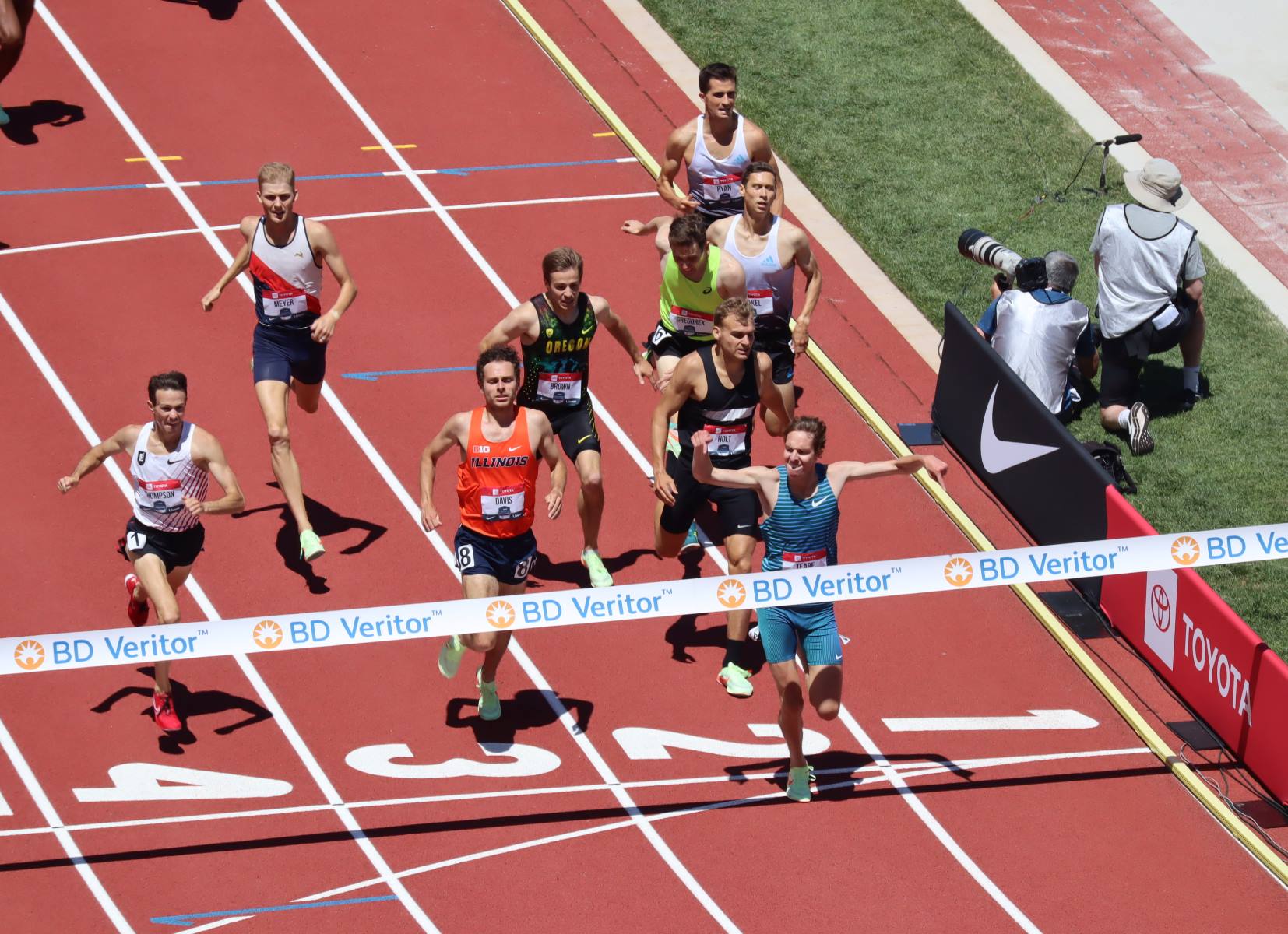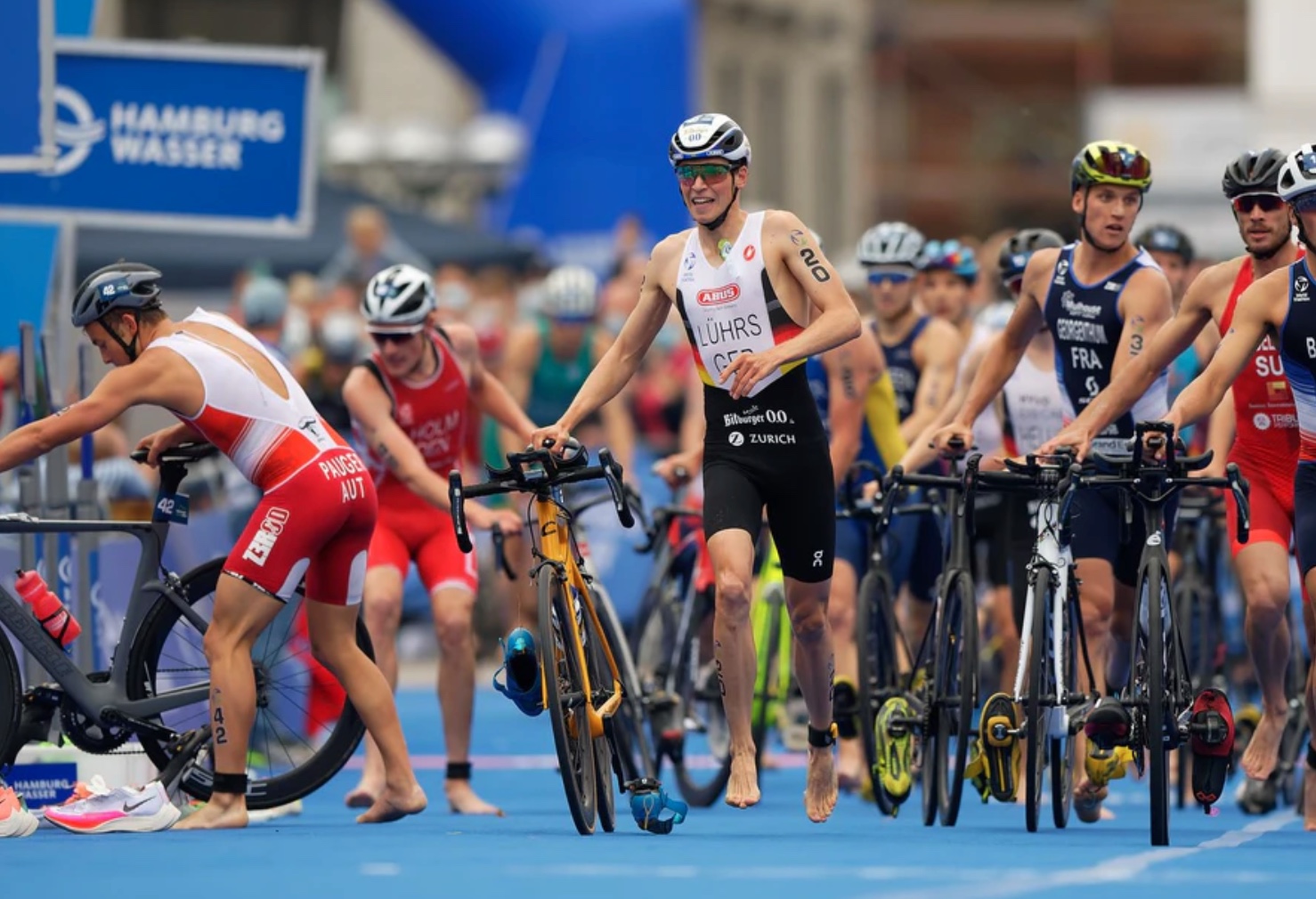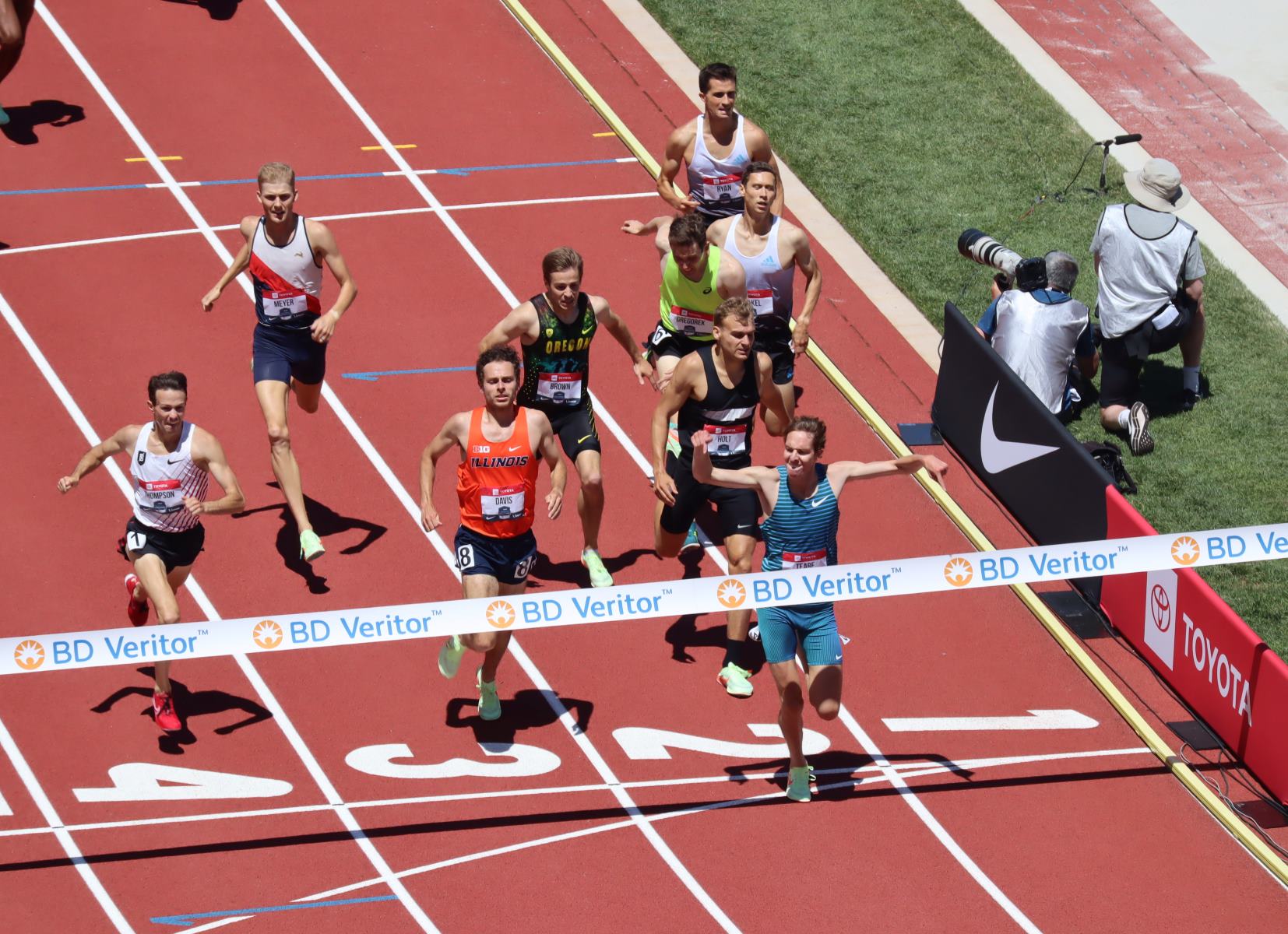Home>Misc>Featured>What Type Of Respiration Does A Human Perform If He/ She Is Running A Marathon?


Featured
What Type Of Respiration Does A Human Perform If He/ She Is Running A Marathon?
Modified: January 22, 2024
Discover the featured type of respiration that a human performs while running a marathon and understand its impact on the body's performance.
Introduction
Running a marathon is an incredible feat of endurance and determination. It pushes the limits of the human body, requiring physical strength, mental focus, and efficient respiration. As runners tackle the long-distance race, their bodies adapt to meet the increased demands for oxygen and energy.
Respiration, the process by which our bodies take in oxygen and release carbon dioxide, plays a crucial role in marathon running. It provides the necessary fuel for muscles to keep moving, allowing runners to sustain their effort over the challenging distance.
In this article, we will explore the type of respiration that occurs when a human is running a marathon. We will delve into the basics of respiration, understand the concept of aerobic respiration, and examine how respiration is affected during long-distance running. Additionally, we will discuss the relationship between heart rate and respiration rate, the importance of efficient respiration in training, and the potential consequences of poor respiration on performance.
By gaining insight into the respiratory processes involved in marathon running, we can better understand the incredible physiological adaptations that occur in the human body to endure and overcome the challenges of this endurance event.
The Basics of Respiration
Respiration is a fundamental process that occurs in all living organisms, including humans. It involves the exchange of gases between our bodies and the environment, specifically the intake of oxygen and the release of carbon dioxide. This process enables the production of energy necessary for the functioning of cells.
The primary organs involved in respiration are the lungs. When we inhale, air enters the respiratory system through our nose or mouth and travels down the trachea. From there, it branches into two bronchi, which further divide into smaller tubes called bronchioles. At the end of these bronchioles are tiny air sacs called alveoli, where the actual gas exchange happens.
During inhalation, the diaphragm and intercostal muscles contract, expanding the chest cavity and creating a negative pressure that pulls air into the lungs. Oxygen from the inhaled air diffuses across the alveolar walls, entering the bloodstream. Carbon dioxide, a waste product of cellular metabolism, travels in the opposite direction – from the blood into the alveoli – and is expelled during exhalation.
Two types of respiration occur in humans: aerobic and anaerobic respiration. In the context of marathon running, it is aerobic respiration that plays a predominant role in providing the necessary energy for sustained exercise.
Aerobic respiration involves the utilization of oxygen to produce ATP, the body’s primary energy currency. This process occurs in the mitochondria of cells, and it is highly efficient in generating a large amount of ATP. In comparison, anaerobic respiration occurs in the absence of oxygen and produces ATP at a faster rate but with less efficiency.
During rest or low-intensity exercise, the body predominantly relies on aerobic respiration to meet its energy needs. However, as exercise intensity increases, such as during marathon running, the demand for oxygen and energy surpasses the capacity of aerobic respiration alone. In these situations, the body resorts to anaerobic respiration as a temporary energy source, leading to the accumulation of lactic acid and the onset of muscle fatigue.
In the next section, we will delve deeper into the concept of aerobic respiration and its significance in marathon running.
Understanding Aerobic Respiration
Aerobic respiration is a vital process for marathon runners as it allows for the sustained production of energy required to keep the muscles moving over a long distance. This type of respiration occurs in the presence of oxygen and involves the breakdown of glucose to produce adenosine triphosphate (ATP), the energy currency of cells.
The process of aerobic respiration can be divided into three main stages: glycolysis, the Krebs cycle (also known as the citric acid cycle or the tricarboxylic acid cycle), and the electron transport chain.
Glycolysis: This is the initial step of aerobic respiration and takes place in the cytoplasm of cells. During glycolysis, glucose molecule is converted into two molecules of pyruvate, resulting in a small amount of ATP and NADH (nicotinamide adenine dinucleotide) being produced.
Krebs Cycle: The pyruvate molecules from glycolysis enter the mitochondria and undergo further oxidation in the Krebs cycle. This results in the production of additional ATP, NADH, and FADH2 (flavin adenine dinucleotide), which carry high-energy electrons to the next stage of respiration.
Electron Transport Chain: This final stage takes place on the inner mitochondrial membrane. The high-energy electrons from NADH and FADH2 are transported through a series of protein complexes, generating a flow of protons across the membrane. This flow of protons drives ATP synthesis through the action of an enzyme called ATP synthase, resulting in a significant production of ATP.
Aerobic respiration is crucial for long-distance running as it yields a large amount of ATP, providing sustained energy for muscle contractions. It is an efficient process that allows for the complete breakdown of glucose, ensuring that the body does not accumulate lactic acid, which can lead to fatigue and decreased performance.
Furthermore, aerobic respiration relies on the availability of oxygen. Adequate oxygen supply is essential to ensure the steady functioning of the electron transport chain and the efficient production of ATP. Therefore, marathon runners must optimize their oxygen intake through proper breathing techniques during the race, which we will explore in more detail later in the article.
Understanding aerobic respiration and its role in providing continuous energy during marathon running is crucial for athletes aiming to enhance their performance and endurance. By optimizing their aerobic energy systems, runners can improve their ability to sustain a fast pace over long distances, contributing to better race times.
Respiration during Marathon Running
Marathon running is an endurance activity that demands a significant amount of energy from the body. As the race progresses, the body relies on efficient respiration to ensure a continuous supply of oxygen to the muscles and remove waste products, such as carbon dioxide, to maintain optimal performance.
During a marathon, the body undergoes various physiological changes that affect respiration. The increased energy demands force the respiratory system to work harder to meet the oxygen requirements of the working muscles. The rate and depth of breathing typically increase to facilitate the intake of more oxygen and the removal of carbon dioxide.
One key aspect of respiration during marathon running is the synchronization with the runner’s stride. As the foot strikes the ground, the body naturally expels air, and as the foot lifts off, the body inhales air. This rhythmic pattern helps optimize respiration efficiency and minimize energy expenditure.
Another important factor to consider is the regulation of breathing. The body has built-in mechanisms to control breathing rate and depth based on metabolic needs. The level of carbon dioxide in the blood acts as the primary regulator, stimulating the brain to increase or decrease respiration accordingly. During intense exercise, the increased production of carbon dioxide prompts faster and deeper breathing to remove the waste gas and maintain a balanced oxygen to carbon dioxide ratio.
It is also worth noting the role of the diaphragm, a dome-shaped muscle below the lungs that plays a crucial role in respiration. During marathon running, the diaphragm contracts more forcefully and rapidly to increase the depth of breaths, helping to deliver the necessary oxygen to the working muscles.
Efficient respiration during a marathon requires the athlete to develop proper breathing techniques. Many runners find that adopting a rhythmic breathing pattern, such as inhaling for a certain number of steps and exhaling for another number of steps, helps maintain a steady intake of oxygen and optimizes the synchronization with stride rhythm.
Furthermore, maintaining good posture throughout the race can also aid in respiration. An upright posture opens up the chest cavity and allows for greater lung expansion, facilitating deeper breaths and improved oxygen uptake.
In summary, respiration during marathon running is a dynamic process that adjusts to meet the increased oxygen demands of the working muscles. By developing proper breathing techniques, synchronizing respiration with stride rhythm, and maintaining good posture, runners can optimize their oxygen intake and removal of carbon dioxide, improving their overall performance during the marathon.
Energy Demands during a Marathon
Completing a marathon requires a significant amount of energy. The human body relies on various energy systems to meet the demands of prolonged endurance activity, ensuring that the muscles have the fuel they need to sustain the race.
During a marathon, the primary source of energy comes from the breakdown of carbohydrates, specifically glycogen stored in the muscles and liver, as well as glucose circulating in the bloodstream. This process, known as glycogenolysis, allows the body to access readily available fuel for immediate use.
As the race progresses, glycogen stores deplete, and the body must turn to alternate energy sources. Fat stores become a crucial fuel source during the later stages of a marathon. Fat is a concentrated source of energy, providing the body with a nearly unlimited supply of fuel.
However, fat metabolism requires more oxygen compared to carbohydrate metabolism, which means that the body must increase its oxygen consumption to maintain the same pace. This is why efficient respiration is crucial during a marathon, as it ensures an adequate supply of oxygen to support fat metabolism.
In addition to carbohydrates and fat, the body also utilizes protein as a minor energy source during a marathon. Protein provides around 5-10% of the energy needed, primarily when glycogen and fat stores are depleted. However, the breakdown of protein for energy is not ideal, as it can lead to muscle tissue breakdown and impair recovery.
The energy demands during a marathon vary depending on the individual’s pace, body weight, and running efficiency. On average, runners can burn between 100-150 calories per mile during a marathon. For a 42.195-kilometer course, this translates to approximately 2,620-3,930 calories. Therefore, it is crucial for marathon runners to ensure they have an adequate nutritional plan before, during, and after the race to replenish their energy stores and support optimal performance.
Proper hydration also plays a significant role in meeting the energy demands of a marathon. Dehydration can lead to a decrease in blood volume and hinder the delivery of oxygen to the muscles, affecting performance. Therefore, runners must maintain a well-hydrated state throughout the race.
Understanding the energy demands of a marathon allows athletes to develop effective fueling strategies to maximize their performance. By consuming a balanced diet rich in carbohydrates, healthy fats, and protein, and maintaining proper hydration, runners can optimize their energy stores and meet the rigorous demands of the marathon distance.
Metabolic Shift during Long-Distance Running
Long-distance running, such as a marathon, requires a shift in metabolism to sustain energy production over an extended period. As the race progresses, the body undergoes various metabolic changes to meet the increasing energy demands and maintain optimal performance.
At the start of a marathon, the body primarily relies on carbohydrates, specifically muscle glycogen and circulating glucose, as the main fuel source. Carbohydrates provide quick energy and are readily accessible for immediate use. However, the body’s glycogen stores are limited, and as the race continues, these stores gradually deplete.
As glycogen reserves decrease, the body starts to shift towards utilizing fat as a predominant energy source. Adipose tissue stores in the form of triglycerides are broken down into fatty acids and released into the bloodstream to provide fuel to the working muscles. Fat is a highly efficient source of energy, offering a nearly endless supply compared to limited glycogen stores.
This metabolic shift toward fat metabolism during long-distance running allows the body to conserve its limited glycogen stores, which are reserved for critical high-intensity moments or sprint finishes. This adaptation is crucial for maintaining endurance over the marathon distance.
During the transition to fat metabolism, the body undergoes several adjustments. The muscles become more efficient at utilizing fatty acids for energy, and the rate of fat oxidation increases. This adaptation allows marathon runners to sustain a steady pace for longer periods without experiencing a severe energy drop due to glycogen depletion.
However, it’s important to note that while fat metabolism is efficient, it requires more oxygen compared to carbohydrate metabolism. As a result, runners may experience an increase in respiration rate and depth to meet the oxygen demands of fat oxidation. This is why proper respiratory function and efficient breathing techniques are vital during long-distance running.
In addition to fat metabolism, the body also starts to break down muscle protein as a source of energy during prolonged endurance activity. This process is known as gluconeogenesis, where amino acids from muscle protein are converted into glucose to support energy production. However, the use of muscle protein as an energy source is undesirable, as it can lead to muscle breakdown and impaired recovery.
To optimize metabolic efficiency during long-distance running, it is essential for marathon runners to maintain a well-balanced diet that supports carbohydrate loading before the race. Ensuring an ample glycogen reserve can delay the shift to fat metabolism and preserve valuable muscle protein.
Understanding the metabolic shift that occurs during long-distance running helps athletes tailor their training and nutrition strategies to optimize performance. By training the body to efficiently utilize fat as an energy source and preserving glycogen stores, runners can enhance their endurance capabilities and push through the challenging demands of a marathon.
Breathing Frequency and Depth during a Marathon
Breathing is a vital component of marathon running, as it ensures the delivery of oxygen to the working muscles and the removal of carbon dioxide, enabling optimal performance. The respiratory system adjusts breathing frequency and depth to meet the increased oxygen demands during a marathon.
As the intensity of exercise increases, so does the rate and depth of breathing. The body needs to take in more oxygen to support the increased energy production required by the working muscles. This is achieved through an increase in breathing frequency, also known as respiratory rate.
During a marathon, the average breathing frequency can range from 40-60 breaths per minute. This rapid and shallow breathing helps to optimize the exchange of gases in the lungs, ensuring a constant supply of oxygen and the removal of carbon dioxide.
The depth of breathing, also known as tidal volume, also increases during a marathon. Tidal volume refers to the amount of air that is inhaled or exhaled with each breath. With the increased oxygen demands, the body needs to take in a larger volume of air to meet the energy requirements of the muscles. By taking deeper breaths, runners can bring in more oxygen-rich air into the lungs, allowing for efficient gas exchange.
Rhythmic breathing, synchronized with the runner’s stride, is often utilized during a marathon. Many runners adopt a pattern of inhaling and exhaling for a certain number of steps to help maintain a consistent breathing rhythm. This can aid in maintaining a steady oxygen supply to the muscles and optimize running economy.
Proper breathing technique is vital during a marathon to avoid discomfort and to minimize energy expenditure. Shallow, chest-only breathing can lead to inefficient gas exchange and increased fatigue. Instead, runners should aim for diaphragmatic breathing, which involves using the diaphragm, a dome-shaped muscle under the lungs, to expand the lungs and fill them with air. This type of breathing allows for deeper, more efficient inhalation and exhalation.
In addition to breathing frequency and depth, the control of breathing during a marathon is influenced by the brain’s respiratory centers, which respond to carbon dioxide levels in the blood. As exercise intensity increases, carbon dioxide production also increases. Elevated levels of carbon dioxide act as a stimulus to increase breathing rate and depth, ensuring the removal of this waste gas and maintaining a balance between oxygen and carbon dioxide in the body.
It’s worth noting that individual differences in breathing frequency and depth exist among marathon runners. Factors such as fitness level, running intensity, and lung capacity can influence respiratory patterns. It is important for each runner to find a comfortable and efficient breathing pattern that suits their needs and optimizes their performance.
Understanding the role of breathing frequency and depth during a marathon can help runners develop proper breathing techniques, improve oxygen delivery to the muscles, and enhance overall performance during the race.
Heart Rate and Respiration Rate Relationship
The relationship between heart rate and respiration rate is closely intertwined during physical activity, including marathon running. Both heart rate and respiration rate increase to meet the increased demands for oxygen and energy production in the body.
Heart rate refers to the number of times the heart beats per minute. It is directly influenced by the body’s need for oxygen and the level of physical exertion. During a marathon, as the intensity of the race and the demand for oxygen rises, the heart rate progressively increases to deliver oxygen-rich blood to the working muscles.
Respiration rate, on the other hand, is the number of breaths taken per minute. It reflects the body’s need to replenish oxygen supplies and remove waste gases, primarily carbon dioxide. The increase in respiration rate ensures that enough oxygen is available to meet the metabolic demands of the active muscles and maintain a balanced internal environment.
The relationship between heart rate and respiration rate during a marathon is interdependent. As the body requires more oxygen, both heart rate and respiration rate increase to meet the heightened oxygen demand.
Heart rate and respiration rate tend to rise in unison during exercise. This synchronization occurs due to the complex interplay between the respiratory and cardiovascular systems. The respiratory system supplies oxygen to the circulatory system, which is then distributed to the working muscles by the heart.
Moreover, the relationship between heart rate and respiration rate is also influenced by the respiratory sinus arrhythmia. In simple terms, this means that during inhalation, the heart rate increases slightly, and during exhalation, it decreases slightly. This natural fluctuation is a normal physiological response and helps optimize oxygen uptake by the lungs and delivery to the working muscles.
Heart rate and respiration rate are also influenced by factors such as training status, running efficiency, environmental conditions, and individual genetic variations. Well-trained runners tend to have lower resting heart rates and more efficient breathing patterns, enabling them to sustain higher intensities with lower relative effort.
In summary, heart rate and respiration rate have a close relationship during marathon running. Both increase to meet the oxygen demands of the body. This relationship is a fundamental aspect of efficient cardiovascular and respiratory function, enabling runners to sustain a consistent level of performance throughout the race.
Training for Efficient Marathon Respiration
Efficient respiration plays a critical role in marathon running, enabling runners to optimize oxygen intake, remove waste gases, and sustain energy production. Training for efficient marathon respiration involves specific strategies aimed at improving respiratory function and enhancing overall performance during the race.
One of the key aspects of training for efficient marathon respiration is developing proper breathing techniques. Runners should focus on diaphragmatic breathing, also known as belly breathing, which involves engaging the diaphragm to draw air deep into the lungs. This type of breathing allows for increased oxygen exchange and ensures optimal delivery of oxygen to the working muscles.
Incorporating breathing exercises into training routines can also be beneficial. Deep breathing exercises, such as inhaling deeply and exhaling fully, can help strengthen the respiratory muscles and increase lung capacity. Additionally, practicing rhythmic breathing patterns can help runners synchronize their breathing with their stride, improving running economy and oxygen utilization.
Interval training, incorporating both high-intensity intervals and recovery periods, can also enhance respiratory fitness. Intense efforts, such as sprint intervals or hill repeats, challenge the respiratory system, forcing it to adapt and improve its efficiency. This training approach can lead to increased lung capacity, improved oxygen uptake, and enhanced overall respiratory function.
Endurance training is also essential for developing efficient marathon respiration. Long runs at a moderate pace help improve the body’s ability to utilize oxygen and metabolize fuel sources effectively. Gradually increasing the duration and intensity of these runs allows the respiratory and cardiovascular systems to adapt and become more efficient at meeting the demands of sustained distance running.
Strength training exercises that target the respiratory muscles, such as the diaphragm and intercostal muscles, can also be beneficial. These exercises can include deep breathing against resistance or using specific equipment designed to strengthen respiratory muscles. Strengthening these muscles can improve their endurance, allowing for efficient and sustained breathing during long-distance running.
Lastly, proper hydration during training is crucial for maintaining efficient respiration. Dehydration can lead to a decrease in blood volume and impact the body’s ability to transport oxygen effectively. It is important for runners to ensure they are adequately hydrated before, during, and after training sessions to support optimal respiratory function.
Incorporating these training strategies into a marathon preparation plan can help improve respiratory efficiency and enhance overall performance. By focusing on breathing techniques, interval training, endurance training, strength training, and maintaining proper hydration, runners can optimize their respiratory function and maximize their potential on race day.
Effects of Poor Respiration on Performance
Poor respiration can have significant effects on performance during marathon running. Inefficient breathing techniques and respiratory limitations can hinder oxygen intake, limit energy production, and negatively impact overall running performance. Understanding the effects of poor respiration can help athletes address these issues and optimize their marathon experience.
One of the immediate effects of poor respiration is reduced oxygen supply to the working muscles. Inadequate oxygen intake impairs aerobic energy production, limiting the body’s ability to sustain a desired pace and leading to fatigue more quickly. This can result in a decrease in performance and the inability to maintain an optimal running speed throughout the race.
Poor respiration can also lead to inefficient removal of carbon dioxide, a waste product of metabolism. Accumulation of carbon dioxide can contribute to an increase in acidity in the muscles and impair muscle function. This can lead to a decreased ability to contract and perform optimally, further impacting performance and causing a decline in running efficiency.
In addition to immediate effects, poor respiration can also have long-term consequences. Training with inefficient breathing techniques can hinder the development of respiratory muscles and impair lung capacity, limiting the body’s ability to take in and utilize oxygen effectively. This can impact overall endurance and hinder progress in running performance.
Furthermore, poor respiration can lead to improper distribution of oxygen to different muscle groups. Inefficient breathing patterns may result in certain muscles receiving less oxygen compared to others, affecting their ability to perform optimally. This imbalance can lead to muscle fatigue, decreased power output, and an increased risk of injuries during the race.
Poor respiration can also negatively impact mental focus and concentration. Inadequate oxygen supply to the brain can lead to mental fatigue, impaired decision-making, and reduced cognitive function. This can ultimately impact a runner’s ability to maintain a strong mental state during a marathon, affecting motivation, pacing, and overall race performance.
It’s also important to consider the cumulative effect of poor respiration on recovery and post-race fatigue. Inefficient breathing can contribute to increased muscle soreness, prolonged recovery periods, and an overall feeling of exhaustion following the marathon. Proper respiration techniques and efficient oxygen utilization can help reduce post-race fatigue and improve the recovery process.
Addressing poor respiration through proper breathing techniques, structured training plans, and awareness of respiratory limitations is essential for marathon runners. By optimizing respiration, athletes can improve oxygen delivery, enhance energy production, maintain mental focus, and ultimately enhance overall performance during the marathon.
Conclusion
Respiration plays a vital role in marathon running, supporting the body’s energy production, oxygen delivery, and waste removal. Understanding the type of respiration, such as aerobic respiration, and its significance during a marathon is essential for athletes aiming to optimize their performance. By adopting proper breathing techniques, runners can enhance oxygen intake, improve carbon dioxide removal, and increase running efficiency.
During a marathon, the body undergoes metabolic shifts, transitioning from carbohydrate to fat metabolism to sustain energy production. This adaptation requires efficient respiration to ensure optimal utilization of oxygen and fuel sources. The relationship between heart rate and respiration rate is closely intertwined, with both increasing to meet the demands of oxygen supply and energy expenditure.
Training for efficient marathon respiration involves various strategies, including developing proper breathing techniques, incorporating breathing exercises, and engaging in interval and endurance training. Strengthening respiratory muscles and maintaining proper hydration are also crucial for optimizing respiratory efficiency. On the other hand, poor respiration can lead to diminished oxygen supply, impaired energy production, decreased running performance, and prolonged recovery periods.
By addressing and improving respiration during marathon training, athletes can enhance their running capabilities, sustain a steady pace, and achieve their performance goals. Efficient respiration not only impacts physical performance but also contributes to mental focus and overall well-being during the marathon.
In conclusion, prioritizing proper respiration techniques and ensuring efficient breathing patterns is essential for marathon runners. By embracing the principles of efficient respiration, athletes can optimize oxygen delivery, enhance energy production, and elevate their overall performance during the demanding marathon distance.









